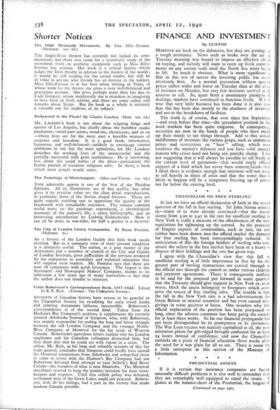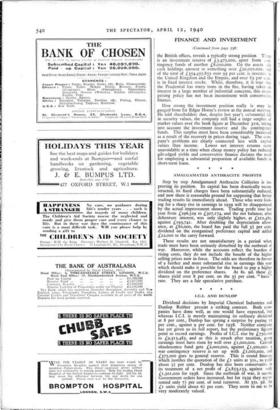PRUDENTIAL ASSETS
If it is certain that insurance companies are facing unusually difficult problems it is also well to remember that they are remarkably well equipped to stand the strain. A glance at the balance-sheet of the Prudential, the largest of (Continued on page 540) FINANCE AND INVESTMENT
(Continued from page 538)
the British offices, reveals a typically strong position. There is an investment reserve of f,475,000, apart from con. tingency funds of another L8,000,000. On the assets >ide cash holdings amount to something over £20,000,000, and of the total of £354,455,855 over 93 per cent. is investec: in the United Kingdom and the Empire, and over 83 per cent. is in fixed interest stocks. While, therefore, it is true that the Prudential has many irons in the fire, having taken an interest in a large number of industrial concerns, this enter- prising policy has not been inconsistent with conservative finance.
How strong the investment position really is may be gauged from Sir Edgar Home's review at the annual meeting. He told shareholders that, despite last year's substantial fall in security values, the company still had a large surplus of market values over the book figure at December 31st, taking into account the investment reserve and the contingency funds. This surplus must have been considerably increased as a result of the recovery in prices during 1940. The com- pany's problems are clearly connected less with capital values than income. Lower net interest returns seem unavoidable at a time when cheap money policy has reduced gilt-edged yields and conservative finance dictates the need for employing a substantial proportion of available funds in short-term loans.



































 Previous page
Previous page